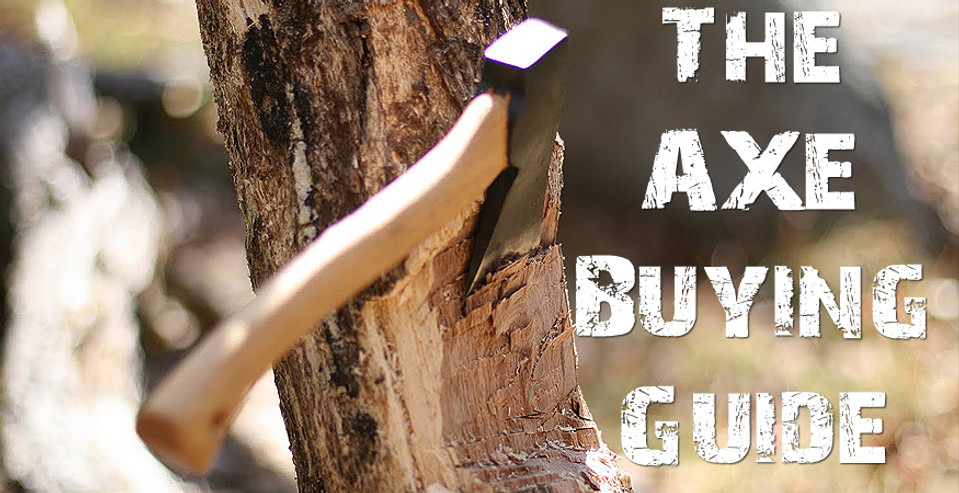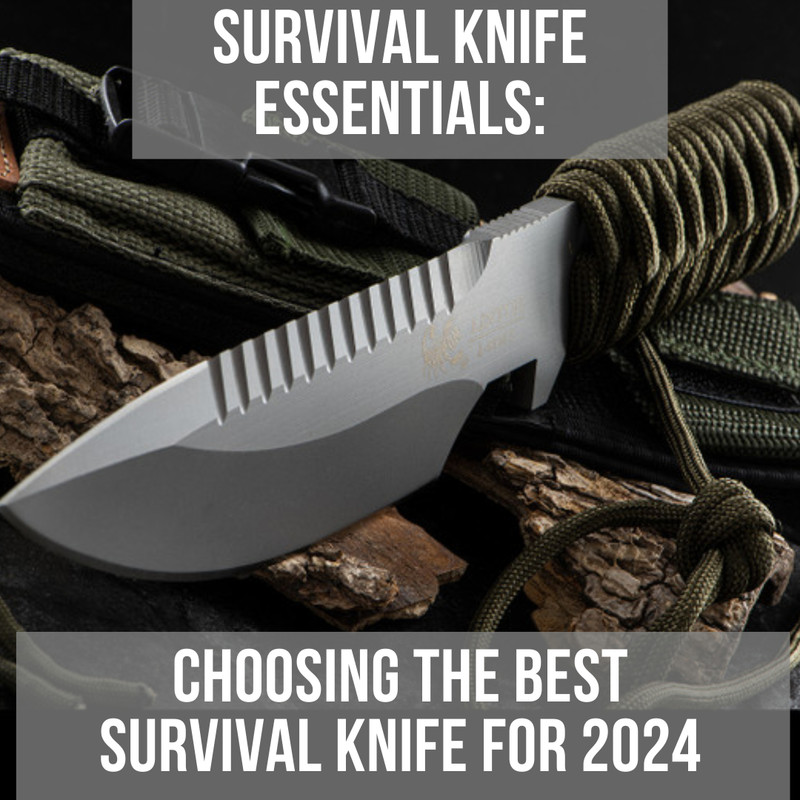The Essential Axe Buying Guide
Posted by HH on 21st Aug 2015
From bushcrafters and preppers to homeowners, foresters and anyone else who spends time outdoors will likely need an axe at some point. This could be from bugging out to managing your garden.
Not too long ago we posted up a buying guide specifically aimed at Tomahawk axes (which are brilliant), but from that post we have been asked a number of times to write a general axe buying guide. Well, here it is! Also if you want us to write about anything, please feel free to drop as an email marketing@heinnie.com and we will see what we can do!
Right that’s enough of the boring stuff, here’s the buying guide . . .
What is the purpose of an axe?
An axe has three main functions. 1) Cutting 2) Splitting 3) Shaping. An axe is a fantastic tool that can be used with great effect, helping you to do jobs faster and easier than ever before. There is a bit of a misconception out there that axes haven’t moved with the times (somewhat understandable) especially when some styles haven’t changed for decades. However, ‘axes’ is a very broad category which includes felling axes, tomahawks and hatchets. Each of these variations has a different purpose in mind. For example a felling axe is designed for felling (pretty obvious), but a hatchet is much smaller and designed for smaller tasks (still packs a big punch though!) but still can be used for larger tasks if required.
Cutting Vs Splitting
The profile of the axe is probably the main component in deciding whether your axe will be good at cutting or splitting. How? Cutting profiles are much thinner than splitting profiles.
Why? The cutting profile is thinner because all the power goes through the first point of contact (when the cutting edge meets the wood), the thinner that point of contact the smaller area all the force is forced into. This is a similar action to shaving where the blade is really thing to cut through the hairs.
With a splitting profile though, you’ll find that the profile is wider. This more ‘wedge’ shaped profile will split the wood into two pieces as the log is forced two different directions.
Something to note is that cutting usually goes across gains, whereas splitting goes through grains. If you were to try and split a log across grains you would find it a lot harder and less productive (that’s not even including the quality of split).
Cutting Edge: Flat Vs Rounded
Some of you may be thinking that we had forgotten to mention shaping axes in the previous section, but don’t worry we haven’t. It is simply more appropriate to talk about it here.
So although the profiles of chopping and splitting axes is different the cutting blade is the same style. Both of them will have rounded cutting edges. This is so that as small an area as possible makes initial contact with the wood. This makes for a much better penetration, therefore a better cut or split.
However, with a shaping axe, you will see that it has a flatter cutting edge. This is so that cuts are more even rather than a deep cut/split. With a broad axe for example you will often find one side of the bit is flat and the other ramped. This allows for clean flat section to be cut out of the wood. You can get the flat side isn’t always on the one side of the axe, so make sure you get the right side for you (usually depends on your dominant hand/arm).
Bit: Single or Double
Some of you would rather a single, some a double. Each has its own merits and drawbacks which we will attempt to make as clear as possible for you.
The single is most definitely the most popular. Why? It’s simple and effective. All the design goes into one single head. This single head is the one point of energy transfer from you to the wood being chopped. On single bit axes, you’ll often find that the poll has been hardened so that it can be used as an improvised hammer. With some other designs like in the tomahawk guide, you’ll also see some other variations made to the poll for additional uses.
The double bit axes is less common, yet still has a number of advantages should you prefer them. The first advantage looks at the balance offered due to the usually symmetrical(ish) head. You’ll also find (if not it’s worth looking into changing) that both heads are ground differently. Why? Well like any knife, different grinds mean the blade will be better suited to different tasks. An example of this is a splitting and shaping cutting edge or profiles for cutting and splitting.
Handle Length
You’ll find a huge range of different sized axes from the small to the huge. Much like how head shape is different, handle size also makes a massive difference depending on your intended uses for it.
Axes size ranges from small ‘pocket’ axes (usually 30cm handle length) to hatchets (45 cm or so) up to felling axes (roughly 60cm handles). Then you have axes like tomahawks and throwing axes which come in a whole array of sizes.
Bigger handle length tends to mean more power is generated therefore better for bigger tasks where precision isn’t essential. If you want a axe with more control and less power then go smaller. Size isn’t everything, no one will judge you for having a smaller axe.
Handle Materials
You really have a choice of three or four. Wood, metal, FRN or G10.
Starting with the G10 and FRN. These usually cover a metal frame. Adding comfort, grip and aiding in what the axe can be sued for. These are great grips that come on a whole range of different shape and styles of handle.
Wooden handles are simple and effective. They are great shock absorbers and are easily replaced if you needed to. Also they maintain that traditional axe look, which a lot of people like. With wooden handles be sure to note the grains running through. Grains running vertically down the length of the handle are likely to be the best quality.
Metal handles, these are really only found in smaller axes such as hatchets. Really strong and durable, but not very good at shock absorption. You’ll also find that on cheaper axes the bar may be hollow, this isn’t ideal especially if you are going to using it often for heavy duty tasks. Ideally look for a full thickness bar.
Summary
We said at the start of this article how almost everyone has need for an axe sometime in their life, and a good axe could last most of the time with you. For the guys wanting a smaller and more lightweight axe, look no further than a hatchet or tomahawk. You still get great power, just in a smaller size. If though you are going to be needing it for bigger tasks then felling axes or equivalent will the first port of call for you.
An axe is a fantastic tool, and one that should be part of any bodies outdoor gear.







